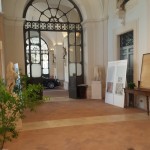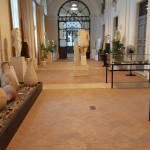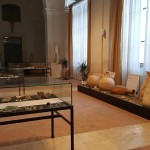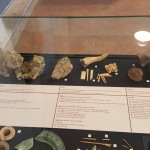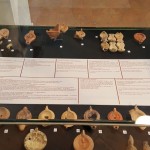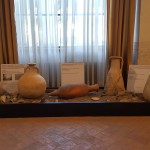|
|
THE ARCHAEOLOGICAL EXCAVATION IN THE COURTYARD OF PALAZZO CORSINI (2019) |
In 2019 an ancient furnace, dating back to the 1st-3rd century AC, used for the production of pottery and glazed pottery, has been discovered in the 18th century courtyard of Palazzo Corsini, seat of the Accademia Nazionale dei Lincei (in front of Villa Farnesina).
The area (Trastevere, Transtiberim), which expands from the eastern slopes of the Janiculum up to the right bank of the Tiber, has been characterized since the republican age and throughout the whole Empire by a mixture of urban aspects: the Porta Settimiana, in the northern sector of the Aurelian Walls (271-275 AC), on an ancient road; the future Via Septimia, up to the roman Villa Farnesina, a complex inhabited since the late 1st century BC, on the banks of the Tiber.
It seems that during the Augustan age the area was devoted only to the settlement of patrician villas, but around the 2nd or 3rd century AC the use of this portion of the city probably changed and it was occupied by manufacturing systems that had never been found before in such a central area of Rome.
In addition to the discovery of the furnace, a deposit of amphorae for the olive oil transport has been found.
The amphorae were probably reused for the collection of rainwater descending from the Janiculum which tended to stagnate nearby the river.


